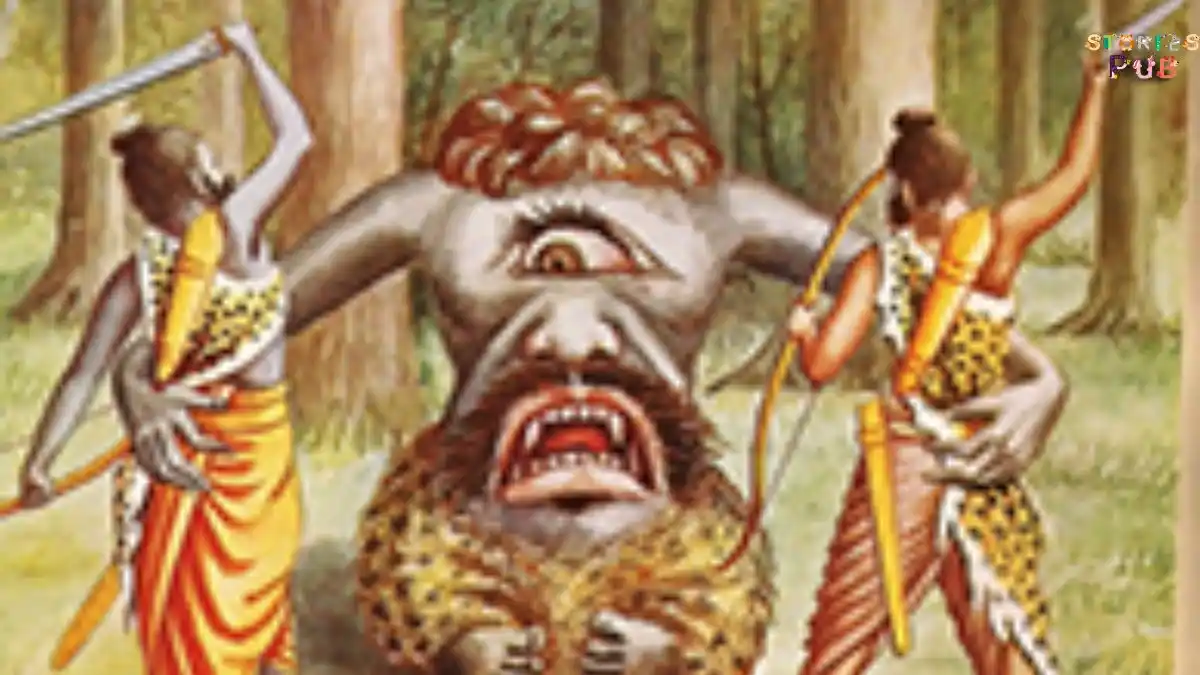Unveiling the Great Vow: The Complete Story of Dizang Bodhisattva

Introduction
Brief overview of Dizang Bodhisattva
Dizang Bodhisattva, also known as Ksitigarbha in Sanskrit, is a revered figure in Mahayana Buddhism. He is believed to be a bodhisattva who made a vow to help all beings reach enlightenment and alleviate their suffering.
Dizang Bodhisattva is often depicted as a kind, compassionate figure who roams through the six realms of existence, helping those who are suffering. According to Mahayana Buddhist texts, Dizang Bodhisattva was originally a monk named Sudhana who lived during the time of Buddha Shakyamuni.
One day, while meditating, Sudhana saw the immense suffering of all sentient beings and was filled with compassion. He made a vow that he would not attain enlightenment until all sentient beings had been liberated from suffering.
Importance of Dizang Bodhisattva in Buddhism
The teachings and practices associated with Dizang Bodhisattva have played an important role in Mahayana Buddhism for centuries. His vow to help all beings reach enlightenment has inspired countless Buddhists to dedicate their lives to the practice of compassion and altruism. In addition, Dizang Bodhisattva is seen as a protector of those who are suffering or lost.
In Chinese Buddhism, he is often referred to as the “Bodhisattva King of Hell,” as he is believed to descend into hell realms to rescue souls and guide them towards liberation. Dizang Bodhisattva’s teachings on the Six Realms of Existence have also been influential in Buddhist thought.
These realms represent different states of existence that sentient beings may inhabit based on their karma. The goal for Buddhists is to attain enlightenment so they can escape these realms and achieve ultimate liberation.
Overall, Dizang Bodhisattva’s importance in Buddhism lies in his dedication to helping all beings, his compassion and empathy towards those who are suffering, and his teachings on the Six Realms of Existence. His story and legacy continue to inspire Buddhists around the world to this day.
Origins and History
Early Life and Enlightenment of Dizang Bodhisattva
Dizang Bodhisattva, also known as Ksitigarbha in Sanskrit, is a bodhisattva in Mahayana Buddhism. According to legend, Dizang Bodhisattva was born into a wealthy family in India during the time of the Buddha.
He was originally named Sudhana but later changed his name to Ksitigarbha, which means “Earth Treasury” or “Womb of the Earth”. After encountering the Buddha at a young age, Ksitigarbha became a monk and dedicated his life to helping others achieve enlightenment.
Ksitigarbha achieved enlightenment after practicing meditation for many years. During his meditation, he saw that there were countless beings suffering in the six realms of existence.
This inspired him to make a great vow: he would not enter Nirvana until all beings were liberated from suffering. This vow earned him the nickname “Bodhisattva of the Great Vow”.
Spread of Dizang Bodhisattva’s Teachings Across Asia
After his enlightenment, Ksitigarbha traveled throughout Asia spreading his teachings. He first went to China where he became known as Dizang Bodhisattva.
His teachings quickly spread throughout Asia where he is still revered today. In Korea and Japan, Dizang is often portrayed as a protector of children and travelers.
In Vietnam, he is associated with filial piety and ancestor worship. In Tibet, he is seen as one of the eight great bodhisattvas who protect mankind.
Significance of Dizang Bodhisattva in Chinese Buddhism
Dizang Bodhisattva has had an enormous impact on Chinese Buddhism since arriving in China over 1,500 years ago. His teachings have influenced many Chinese Buddhist schools, including the Pure Land and Chan schools. In Chinese Buddhism, Dizang is often depicted as a kind and compassionate figure who helps those in need.
He is also associated with the underworld and is said to help guide the souls of the deceased to their next life. Dizang Bodhisattva has become an integral part of Chinese culture and is celebrated during various festivals throughout the year.
One of his most important festivals is the Ghost Festival or Zhongyuan Festival, which takes place on the fifteenth day of the seventh lunar month. Dizang Bodhisattva has played a significant role in Buddhism throughout Asia for over 1,500 years.
His early life and enlightenment inspired his Great Vow to help all beings achieve liberation from suffering. Through his teachings and influence, he has become an essential figure in Chinese Buddhism and an integral part of Asian culture as a whole.
Teachings and Beliefs
The Great Vow and its Importance in Buddhism
Dizang Bodhisattva is also known as the Bodhisattva of the Great Vow. This is because of his commitment to his vow to save all sentient beings from suffering. The Great Vow is a central concept in Mahayana Buddhism that asserts an individual’s dedication to help all beings attain enlightenment.
Dizang Bodhisattva’s vow encompasses compassion towards all living things, even those who cause harm or suffering. His vow also includes the pledge to stay engaged with sentient beings until they attain enlightenment, no matter how long it takes.
This commitment of Dizang Bodhisattva sets an example for Buddhists on how they should live their lives. In Buddhist practice, reciting Dizang Bodhisattva’s name or mantra is believed to bring about a connection with his compassionate energy and help fulfill one’s own vows of helping others achieve enlightenment.
Role of Compassion and Empathy in Dizang Bodhisattva’s Teachings
Dizang Bodhisattva taught that compassion for all sentient beings was essential in achieving enlightenment. Compassion arises when one perceives the suffering of another as their own and feels compelled to alleviate that suffering.
It was believed by Dizang that we cannot reach enlightenment without first developing a deep sense of empathy and compassion towards others. To cultivate compassion, one must be able to recognize the interconnectedness between themselves and other living beings.
This understanding can develop through meditation, mindfulness practices, self-reflection or service towards others. When one cultivates compassion towards others, they create positive karma which leads to positive outcomes for themselves, as well as those around them.
The Six Realms of Existence and How They Relate to the Practice of Buddhism
Dizang Bodhisattva’s teachings state that there are six realms of existence. These realms are divided into three higher and three lower states.
The higher states are the realms of humans, gods, and demi-gods. The lower states include the hells, hungry ghosts, and animals.
The Six Realms represent different levels of consciousness that sentient beings may occupy throughout their journey towards enlightenment. They reflect the persistent cycle of birth, death, and rebirth that is central to Buddhist practice.
According to Dizang Bodhisattva’s teachings, individuals who commit negative actions in one life may be reborn into a lower realm in their next incarnation. Similarly, positive actions will enable them to attain rebirth in one of the higher realms.
Dizang Bodhisattva teaches that liberation from this cycle is possible through commitment to the Great Vow and the cultivation of compassion towards all beings. This commitment can lead to enlightenment and release from the suffering inherent in Samsara – the cyclical nature of life and death.
Dizang Bodhisattva’s teachings emphasize that compassion is essential in achieving enlightenment. His Great Vow sets an example for Buddhists on how they should live their lives by dedicating themselves selflessly to helping others achieve liberation from suffering.
The Six Realms provide a framework for understanding how karma influences one’s place within this cyclical nature of existence while emphasizing our interconnectedness with all living things. By following these teachings closely with dedication and compassion towards all beings regardless of circumstances or conditions we can break free from Samsara cycle and attain nirvana -the ultimate goal for Buddhists – true freedom from suffering forevermore!
Practices and Rituals
Dizang Bodhisattva is a renowned Buddhist figure, and his teachings continue to influence the world today. The practices and rituals associated with Dizang Bodhisattva are varied, but center around the goal of achieving enlightenment through compassion, empathy, and selflessness. Some of the most common practices associated with Dizang Bodhisattva include offerings, chanting mantras, and celebrating festivals.
Offerings to Dizang Bodhisattva
Offerings form an essential part of Buddhist practice. They represent our gratitude towards the Buddha for his teachings and serve as a way to accumulate positive karma.
In many parts of Asia, people offer various items such as flowers, fruits or incense to Dizang Bodhisattva statues in temples or at home altars. These offerings can also be seen as a way of paying respect to one’s ancestors.
Chanting the mantra of Dizang Bodhisattva
Chanting is an important aspect of Buddhist practice that involves reciting sacred texts or mantras repeatedly. Chanting is believed to help clear one’s mind while manifesting spiritual power from within oneself. The mantra associated with Dizang Bodhisattva is “Namo Di Zhang Wang Pusa,” which translates to “Homage to Earth Treasury Bodhisattva.” It represents invoking compassion for all beings while seeking protection from harm.
Celebrations and Festivals Associated with Dizang Bodhisattva
There are several festivals associated with Dizang Bodhisattva across Asia. Depending on regional customs, these celebrations can be held annually or biennially in temples dedicated to him or at home altars where offerings are placed before his image.
One such festival celebrated in China is “Zhongyuan Festival” (also known as Ghost Festival), that takes place on the fifteenth day of the seventh lunar month. During this time, people burn incense and offer food to Dizang Bodhisattva to benefit deceased loved ones.
Some ceremonies associated with Dizang Bodhisattva are conducted daily in temples, as part of Buddhist monastic tradition. These involve a sequence of rituals and offerings led by monks or nuns, including prostrations, chanting, and meditation.
The practices and rituals associated with Dizang Bodhisattva are an important part of Buddhism. They provide an opportunity for individuals to pay respect to Buddha teachings while seeking enlightenment through compassion, empathy and selflessness.
The practices can be seen as powerful tools that enable one to clear their mind while manifesting spiritual power from within oneself. The festivals help bring communities together while allowing them to express gratitude towards their ancestors or seek protection from harm for themselves and their loved ones.
Legacy
Impact on modern-day Buddhism
Dizang Bodhisattva’s legacy can be seen in the continued practice of Buddhism today. His teachings and beliefs have influenced countless practitioners, particularly in China and other East Asian countries. The Great Vow, which emphasizes compassion and empathy for all beings, remains a central tenet of Mahayana Buddhism.
In addition to its spiritual impact, Dizang Bodhisattva’s legacy has also had a profound effect on social and political movements throughout history. One significant example is the Chinese Buddhist monk Taixu (1890-1947), who was heavily influenced by Dizang Bodhisattva’s teachings.
Taixu founded the Buddhist Modernist Movement in the early 20th century, which sought to reinterpret Buddhist teachings for contemporary society. This movement had a major impact on Chinese intellectual thought and played a key role in the country’s modernization.
Influence on art, literature, and culture
Dizang Bodhisattva has had a significant influence on art, literature, and culture throughout history. His image has been depicted in countless works of art such as sculptures and paintings – often featuring him with his characteristic staff or halo.
He has also been referenced in many literary works throughout East Asia. In addition to his direct influence on artistic representation, Dizang Bodhisattva has also indirectly shaped cultural attitudes towards compassion and empathy.
His teachings have inspired countless artists to create works that reflect these values – from poetry to music to film. Even outside of Buddhism, his message of compassion has resonated with people around the world as a universal value worth striving for.
Conclusion
Overall,Dizang Bodhisattva’s story is an inspiring one that demonstrates both the power of faith and the potential for personal transformation through spiritual practice.In addition to his spiritual significance, Dizang Bodhisattva’s legacy has also had a profound impact on social and political movements throughout history. His influence can be seen in the continued practice of Buddhism today, as well as in the many works of art and literature that have been created in his honor. Whether you are a Buddhist practitioner or simply interested in the history and culture of East Asia, the story of Dizang Bodhisattva is one worth exploring further.
Conclusion
Summary of Key Points
Throughout this article, we have explored the story, teachings, and practices of Dizang Bodhisattva. From his humble beginnings to his enlightenment and eventual attainment of Buddhahood, Dizang Bodhisattva’s journey offers insight into the power of compassion and empathy in one’s spiritual path. His Great Vow to save all beings from suffering is a testament to the selflessness and dedication that all Buddhists strive for.
We have also examined the Six Realms of Existence, which offer a unique perspective on the cyclical nature of life and the importance of karma in determining one’s path. The practices and rituals associated with Dizang Bodhisattva provide numerous opportunities for followers to deepen their understanding of his teachings and cultivate compassion in their lives.
Importance of Studying the Story and Teachings
Studying the story and teachings of Dizang Bodhisattva can have profound effects on one’s spiritual journey. His focus on compassion, empathy, and selflessness provides a valuable framework for cultivating a more meaningful life. By studying his teachings, we can begin to understand our interconnectedness with all beings and develop a greater sense of empathy towards those around us.
Furthermore, exploring Dizang Bodhisattva’s story allows us to connect with Buddhism’s rich history and traditions. Through understanding his role in Chinese Buddhism and how his teachings have spread throughout Asia over time, we can gain new insights into this ancient religion that has impacted so many people across the globe.
In today’s world where stress seems ubiquitous, learning about an ancient figure like Dizang Bodhisattva can provide much-needed solace amidst daily challenges. His message is still relevant today as it was centuries ago – helping others helps oneself by cultivating harmony within oneself as well as within society.
Overall, the story and teachings of Dizang Bodhisattva offer a unique perspective on the Buddhist path towards enlightenment, one that emphasizes compassion and empathy as essential elements. By studying his teachings, we can gain valuable insights into our own lives and develop a greater sense of compassion for those around us.
Hey kids, how much did you like Unveiling the Great Vow: The Complete Story of Dizang Bodhisattva? Please share your view in the comment box. Also, please share this story with your friends on social media so they can also enjoy it, and for more such Chinese Mythology, please bookmark storiespub.com.
Related Post :



















